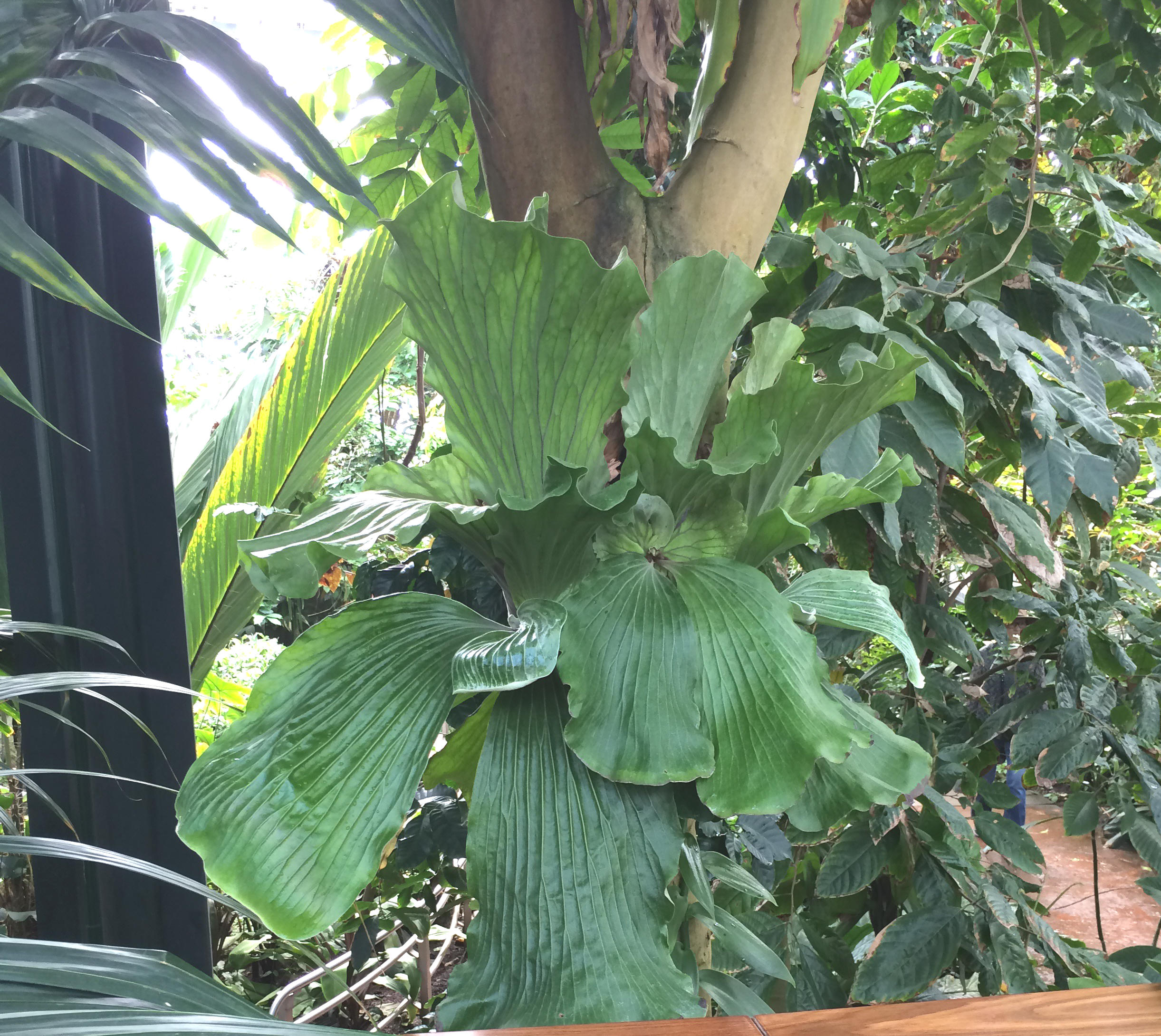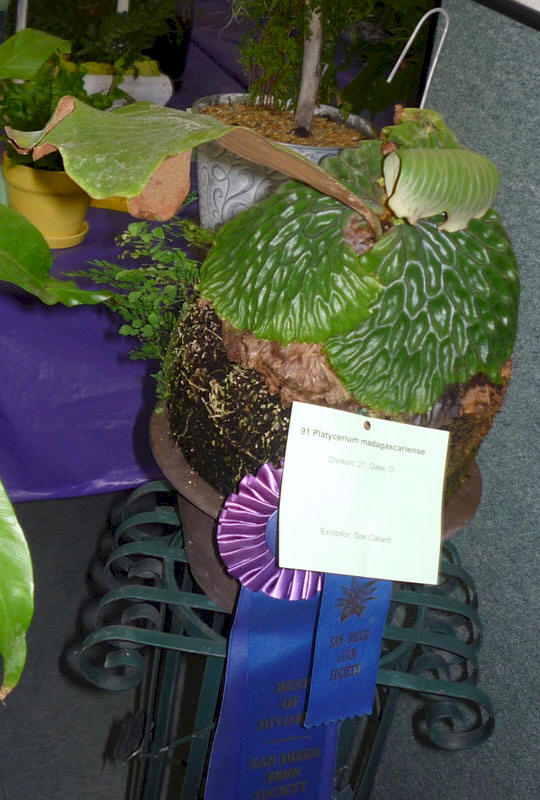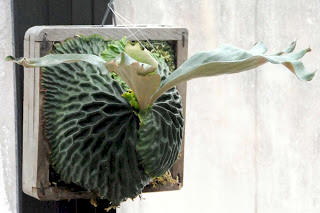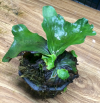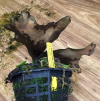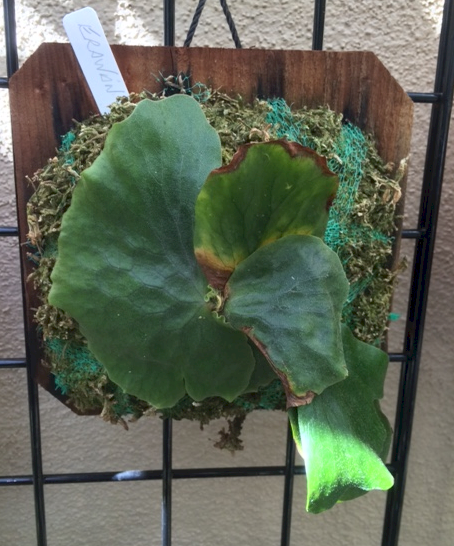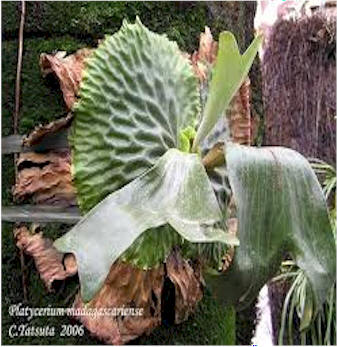
P. madagascariense (madagascar-e-en-se) A rare
species, small to medium sized, with shields like no other platycerium. Their veins form tall
ridges which surround little valleys. New shields are thin and light
green, but turn rich dark green when they mature. The shields cover
the top of the moss and do not collect debris behind them. In nature,
ants live in the shield fronds which may provide the fertilizer.
Fertile fronds are wedged shaped with 1 to 3 shallow forks.
Sore patches grow on the tips of the fertile fronds. The bottom
of the fertile frond is brownish and looks like a very large spore
patch, but closer observation show the spore patch on the tips.
As the plant matures, the base tends to form a spherical shape.
As more pups form from the rhizome, the plant forms a ball shape with
pups growing everywhere.
 Roy
Vail suggests "removal of pups is often not successful, ... pups
should be allowed to become rather large before being cut off."
Not knowing this I successfully removed 7 pups ranging from 1/2 inch
to 3 inches and did not lose any. In 5 months I now have another
crop of pups to remove. I placed the pups on a bed of sphagnum
moss in an orchid pot with many slots/holes. Misted daily, the
small ones are almost 2 inches across and have grown new shield
fronds. Click the photo on right to see a larger image.
Each plant is labeled, A, B, C, D. The first 3 are in 4 inch orchid
pots, the 4th is a 6 inch orchid pot. Roy
Vail suggests "removal of pups is often not successful, ... pups
should be allowed to become rather large before being cut off."
Not knowing this I successfully removed 7 pups ranging from 1/2 inch
to 3 inches and did not lose any. In 5 months I now have another
crop of pups to remove. I placed the pups on a bed of sphagnum
moss in an orchid pot with many slots/holes. Misted daily, the
small ones are almost 2 inches across and have grown new shield
fronds. Click the photo on right to see a larger image.
Each plant is labeled, A, B, C, D. The first 3 are in 4 inch orchid
pots, the 4th is a 6 inch orchid pot.
Roy Vail says "Spore culture is not considered unusually difficult.
Sporophytes are allowed to become 2.5 cm (1 inch) across before they
are transplanted. The other gametophytes seem to wait their turn
before forming sporophytes. One culture (of spore) may produce
sporophytes for two years. That may be what is happening on my
madagascariense that is so proficient. Further thought leads me
to think that the moist moss under the fertile fronds may be an
excellent breeding medium fore sporelings.
Considered a challenging plant to grow, it has been successfully
grown in temps 32°F to 110°F but the extremes should be avoided and
best grown in a greenhouse environment with lots of humidity.
Andy at Andy's Orchids in Encinitas says he has P.
madagascariense growing like wild weeds and claims it is because
he has Reverse Osmosis, RO, watering. When these plants leave
and are watered with city water, he says they do not grow well because of the
chlorine and chemicals in city water. This leads me to think
that filtered bottle water or distilled water may also be good for the
P. madagascariense if RO water is not available.
|
